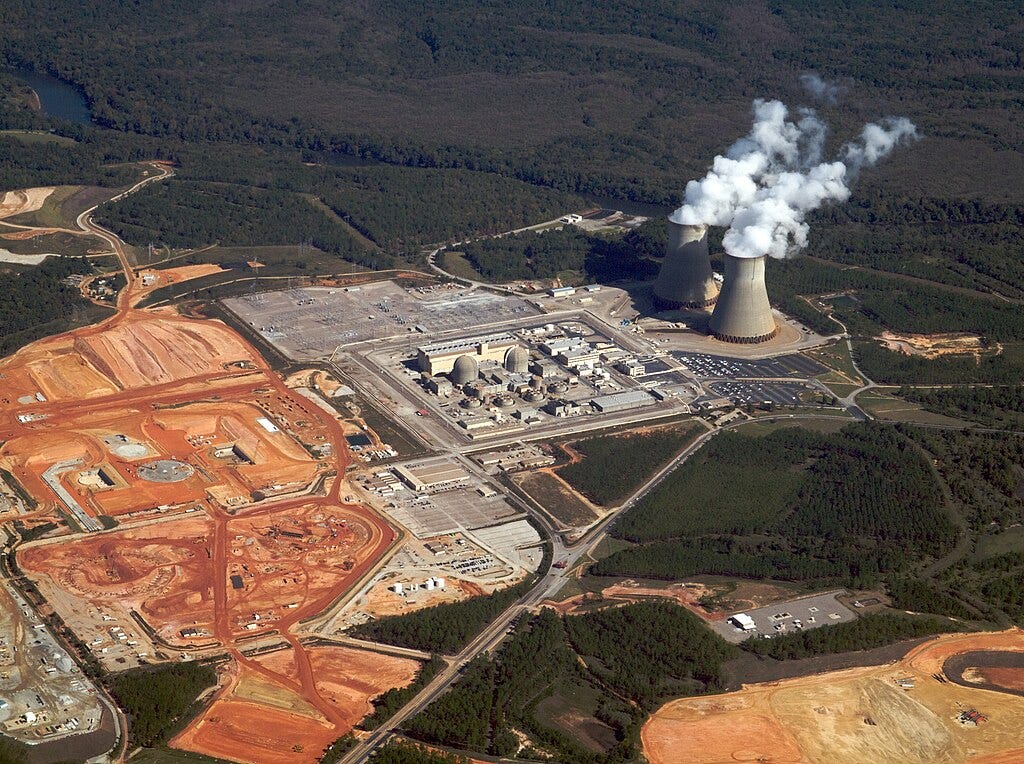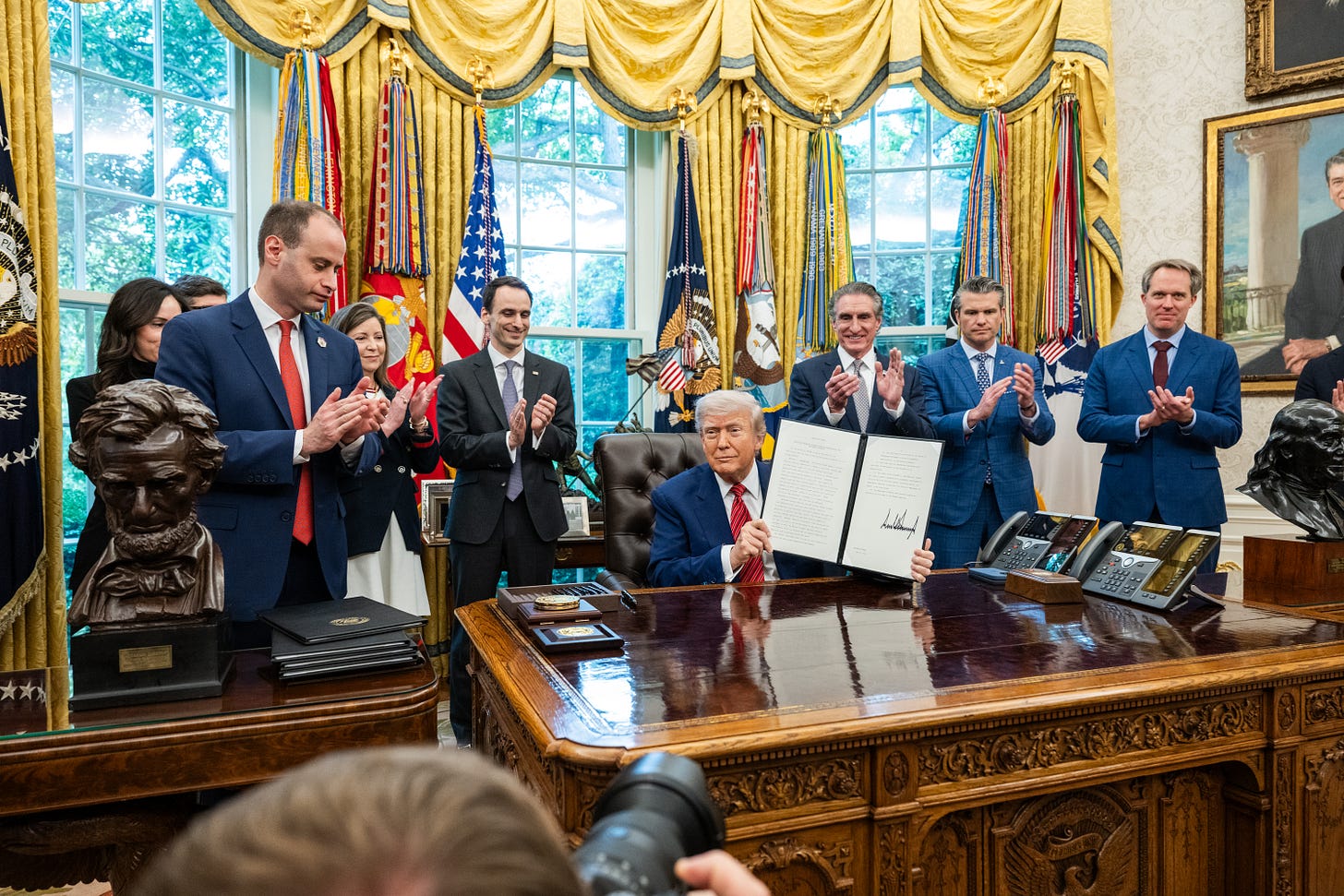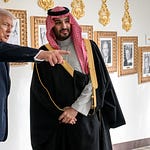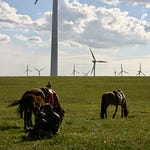Welcome back to Decouple, the best source for cutting-edge analysis on nuclear energy, with weekly interviews by Chris Keefer. Watch on YouTube, Spotify, or Apple.
Last week, U.S. President Trump signed four executive orders to accelerate nuclear power deployment:
Deploying Advanced Nuclear Reactor Technologies for National Security
Reforming Nuclear Reactor Testing at the Department of Energy
To help us understand the implications of these executive orders, I was joined by Thomas Hochman, director of infrastructure policy at the Foundation for American Innovation. We discuss the policy shifts needed to bridge political divides and streamline regulation as the U.S. grapples with rising energy demands driven by artificial intelligence and national security concerns. Are these executive orders enough? Is America’s nuclear resurgence is feasible, or merely rhetorical, amidst a competitive global landscape dominated by China and Russia?
Watch now on YouTube.
We talk about
Trump’s four new nuclear executive orders
Industrial policy versus free-market orthodoxy
The role of the Loan Programs Office
Tensions within the Republican Party over nuclear policy
The viability of large reactors vs. SMRs
Challenges in permitting and regulatory reform
Financial mechanisms necessary for nuclear expansion
Comparisons between U.S. and Chinese nuclear industrial policies
The long term outlook of gas versus nuclear energy
Deeper Dive
Whether or not they will prove effective, Trump’s nuclear executive orders represent a significant shift in U.S. nuclear policy. But anyone familiar with the nuclear sector will realize how cheap words can be. To Hochman, it is yet to be seen whether the political desire to rapidly expand nuclear energy will be able to overcome practical realities of regulatory inertia. And even if the regulatory ratchet on nuclear energy can be loosened, Hochman points that it isn’t merely licensing that has held nuclear back. It’s also financial frameworks. Without robust financial backing from entities like the Loan Programs Office (LPO), these executive orders might achieve little more than headlines.
Hochman emphasizes the evolution of the Loan Programs Office, which itself was born from the Republican Bush administration in 2005, to address market failures amid an energy crisis. Despite its mixed history, exemplified by both Tesla’s success and Solyndra’s collapse, the LPO has become essential. It has quietly fueled nearly every nuclear project launched since 2000, proving that even in a neoliberal landscape, targeted government intervention can yield tangible outcomes.

With the LPO now dramatically scaled back under the Trump administration, it is hard to feel that the U.S. is not slipping farther behind China in nuclear energy, even with the new executive orders. Hochman points out that China’s model of robust state-led industrial clustering and significant workforce investment contrasts starkly with America’s fragmented approach and industrial atrophy.

The debate within the nuclear sector itself, between proponents of large reactors and advocates of smaller, modular alternatives, further complicates this industrial revival. Small modular reactor brochures promise rapid deployment, lower costs, and less regulatory friction. Yet Hochman notes their uncertain economics, highlighting projects like NuScale’s ballooning budgets. Trump’s inclusion of large reactors signals a crucial acknowledgment: proven large-scale technology remains a time-tested path toward substantial nuclear energy deployments.
Underlying these developments is an ideological realignment within American politics. Democrats traditionally skeptical of nuclear now see its necessity for climate objectives, while Republicans historically wary of government intervention recognize nuclear’s strategic importance. Hochman says this ideological convergence is an essential condition for any meaningful progress. However, with the “Big, Beautiful Bill” under scrutiny and Congress still divided on financing and regulatory reform, the future of America’s nuclear renaissance seems hardly clearer than it did before the storm of executive orders.
Watch the full interview
Support Decouple Media
Just as nuclear power needs stable financing and thoughtful investment, so does independent media. Consider supporting Decouple Media by making a pledge on Substack or a tax-deductible donation via our fiscal sponsor.
Timestamps
00:00 Introduction
2:48 A flurry of executive orders
8:08 DOE Loan Programs Office
15:30 Why now?
20:48 Where is the U.S. nuclear sector, really?
23:23 Nuclear at the Department of Defense
27:06 Political considerations
37:33 Implementation of the executive orders
39:13 Industrial Policy
44:50 Is nuclear now a “need to have?”
47:18 EO miscellany
48:58 Permitting reforms
56:33 Outro
Keywords
Trump executive orders, nuclear policy, industrial policy, permitting reform, Loan Programs Office, small modular reactors, large reactors, energy security, regulatory reform, nuclear finance












